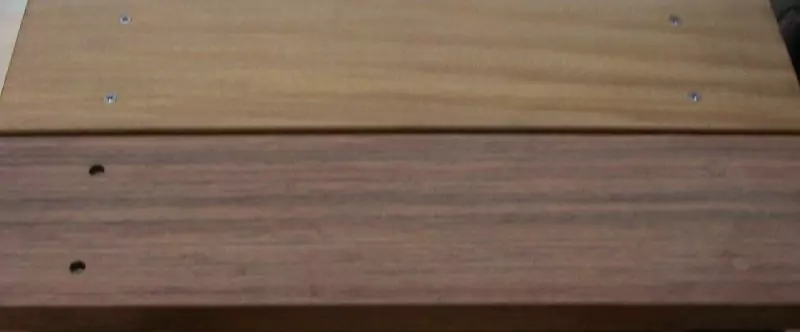
Related Posts

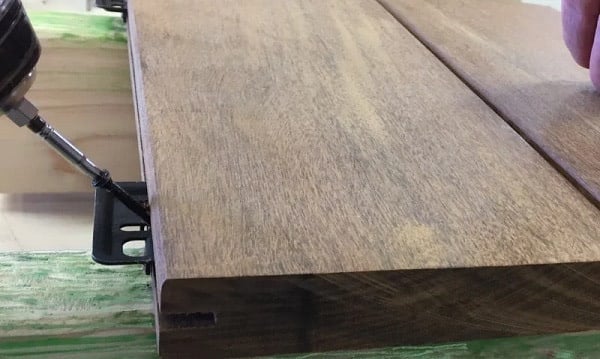

Clients frequently ask us, "What's the best deck fastener for me to use?". There are so many options for deck fastening nowadays, how do you know what will work best for your deck? Depending on you deck project conditions, it is important to choose the right deck fastening method. Deck screws and hidden fasteners are the two main options.
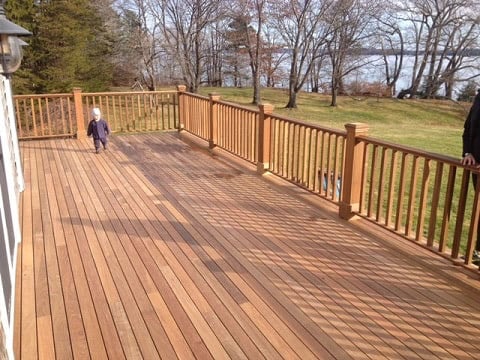
It is a well-known fact that face screwing wood decking boards directly into the deck joists is the strongest deck fastening method available. Two screws per board width, fastening at every joist location provides extra lateral bracing for the entire deck, not just the deck boards. The entire deck structure, both the frame and decking, is far stronger as a total assembly, when deck boards are screwed and attached to the joists. Face screwing deck boards also helps minimize their potential for ‘cupping’.
In fact, in some deck installation conditions, face screwing the deck boards is the only way to build a long-lasting and 'worry-free' deck. Low ventilation decks, close to the ground decks, wider deck boards, high moisture areas are a few examples of installations where face screwing the deck boards work best. If you have a combination of these factors together, face screwing the deck boards is the very best option for performance.
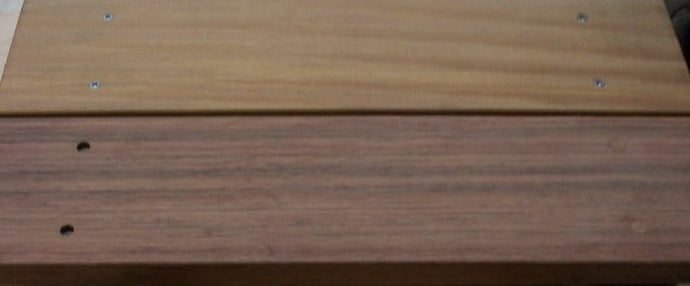 Top deck board shows flush mounted trim head screws. Bottom board shows countersunk screws (left) and countersunk
Top deck board shows flush mounted trim head screws. Bottom board shows countersunk screws (left) and countersunk
with plugged screw heads (right)
Looking for the best decking material for your project?
Download our FREE "Ultimate Guide to Selecting the Right Decking for comparisons.
Not everyone likes the look of an exposed screw head on their deck boards, so other methods have been developed. Because they don’t want call-backs from dissatisfied customers, many contractors will only offer face screwed decking. Some skilled craftsmen will take the extra time and effort and expense to screw and countersink and then plug the screw heads with matching wood plugs.
It takes a patient and skilled craftsman to use this deck installation method. The results are often very beautiful and showcase the work of a skilled artisan. The downside of this method is the extra cost up front for the additional labor. Down the road, some of the plugs may work their way loose over time and may need to be reinstalled or replaced.
Because they do not show on the face of the deck boards, hidden deck fasteners continue to gain popularity. The finished decking looks beautiful and in many installations, will perform well over time. Concealed deck fasteners work best in well ventilated decks, high above the ground in low moisture areas using narrower deck boards. For best long-term performance and looks, those are the ideal conditions for hidden deck fasteners.
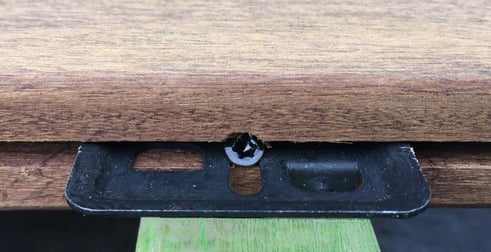
If your deck does not meet these requirements, you are best served considering other deck fastening options. The worst installation conditions to choose typical hidden fasteners for are; low clearance, low ventilation decks, in moist areas, using wider deck boards.
Wood moves, (expands and contracts), naturally throughout its lifetime. Because exterior decking faces the outdoor climate and weather extremes it is especially vulnerable to natural wood movement. Most of the movement happens while the wood is being properly acclimated on site – PRIOR to installation. But the wood still continues to move seasonally, throughout its usable life cycle.
Narrower deck boards expand and contract less. Thicker deck boards are stronger and less apt to cup. That’s why narrower and thicker deck boards are your best decking option for hidden fasteners. Pre-grooved nominal 5/4 x 4 decking boards are the ideal size for hidden deck fastener installations.
We offer a 100% Stainless Steel Concealed Deck Fasteners in black, for highest strength and lowest visibility.
Check it out for yourself, request a FREE sample now.
RELATED:


